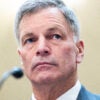Japanese Prime Minister Shinzo Abe has been in office less than a month but is already showing that he means business on addressing his country’s security needs. The Abe administration announced it would increase Japanese defense spending, reversing an 11-year trend of consecutive defense budget cuts.
Abe has also instructed Defense Minister Itsunori Onodera to revise the National Defense Program Guidelines by the year’s end to enhance Japanese security capabilities and cooperation with the U.S. military.
Liberal Democratic Party (LDP) Leader Shinzo Abe’s conservative foreign policy views and the Japanese public’s growing concern over the country’s security vulnerability provide an excellent opportunity for Washington to achieve several policy objectives critical to the health of the U.S.–Japan alliance. His opening moves are very encouraging in this regard.
The Daily Signal depends on the support of readers like you. Donate now
Washington has long pressed Japan to assume a greater role in its own defense while adopting overseas security responsibilities commensurate with its military and economic strength. It would be beneficial for the U.S. if Japan were to increase its defense spending, enable collective self-defense, adopt less restrictive rules of engagement for forces involved in overseas peacekeeping operations, and press forward on building a replacement U.S. Marine Corps airbase on Okinawa.
On January 8, speakers at a Japanese security conference jointly sponsored by The Heritage Foundation and the Project 2049 Institute identified growing Chinese and North Korea aggressiveness as a principle factor for the election of the conservative LDP in last month’s national election. The public favored a strong leader willing to push back against China. Polls show that 25 percent of respondents support increasing Japan’s military strength, up from 14 percent in 2009 and 8 percent in 1991.
Japan’s Ministry of Defense announced that the additional $3.2 billion to the $53 billion defense budget was to acquire additional PAC-3 surface-to-air anti-ballistic missile systems, four F-15 fighter jets, and maritime surveillance equipment. A ministry spokesperson commented, “We need to update our equipment as the security environment surrounding Japan is becoming harsher, as North Korea has test-launched missiles twice in the last year and tensions with China continue.”
Japan deployed PAC-3 missiles to Tokyo and Okinawa in response to North Korea’s two long-range missile tests last year. Previous North Korean missile launches in 1998 and 2006 spurred Tokyo to first initiate and then accelerate a national missile defense program.
North Korea’s most recent rocket launch successfully put a satellite into orbit, demonstrating a breakthrough in its quest to develop an intercontinental ballistic missile (ICBM) to threaten the United States. Then-Chief of the General Staff of the Korean People’s Army Ri Yong-ho boasted several months ago that North Korea had nuclear weapons that could be installed on a missile capable of striking U.S. territory.
China has pursued an increasingly assertive foreign policy and pressed expansionist territorial claims against the Japanese-controlled Senkaku Islands (called Diaoyu by China) and vast regions of the South China Sea. Confrontations between Japan and China over the Senkakus in 2010 and 2012 inflamed nationalist feelings in both countries and increased the risk of a military clash.
It is encouraging that, despite Japan’s fiscal problems, the new leadership understands the need to redress shortfalls in the nation’s defense requirements. Abe has identified an extensive agenda of necessary changes to the Japanese security forces. One hopes that the Obama Administration will take a lesson from Prime Minister Abe to provide sufficient resources for the U.S. military.



























